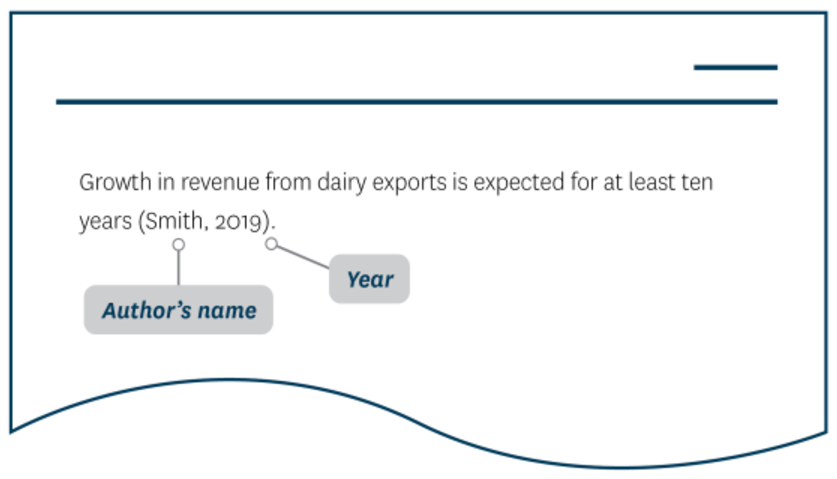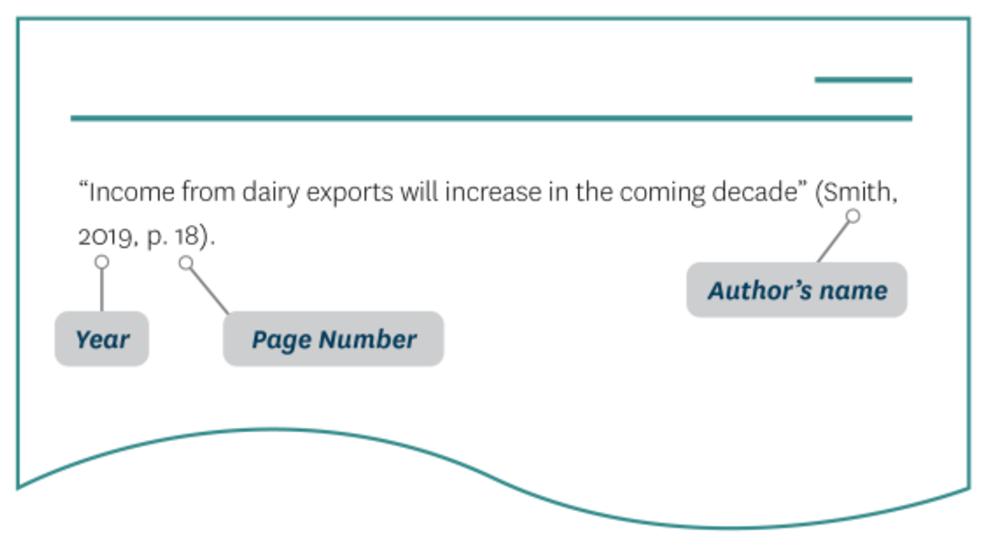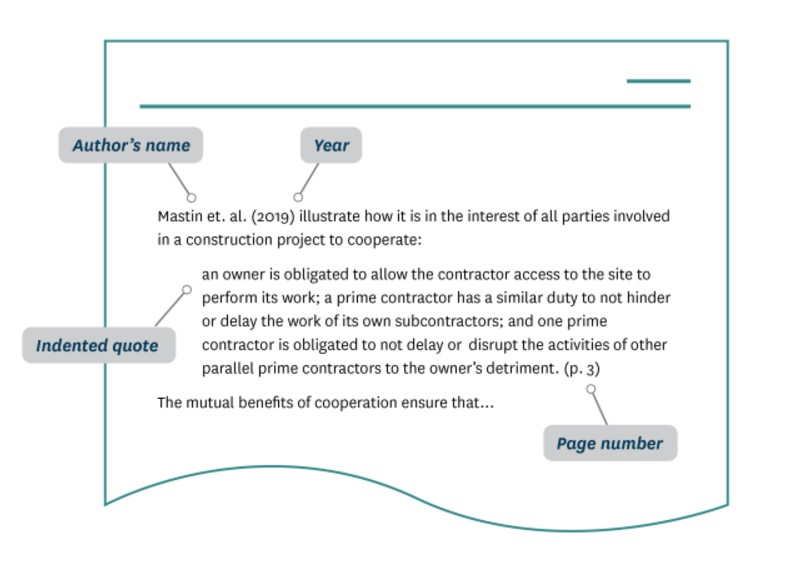(Also check out our video at the bottom of this page).
You must reference ANY words, ideas, images or information taken from ANY source that you have used in your assessment.
APA referencing involves two essential parts:
- in-text citations
- References list
In-text citations
In-text citations sit in your text along with the information you have used.
You need to include an in-text citation each time you refer to information from somewhere else.
Do this if you are directly quoting (taking the exact words from a source) or paraphrasing (re-wording the information into your own words).
In-text citations link to full references on a references list. The references list goes at the end of your assessment.
Here's an example of in-text citations linking to a references list:
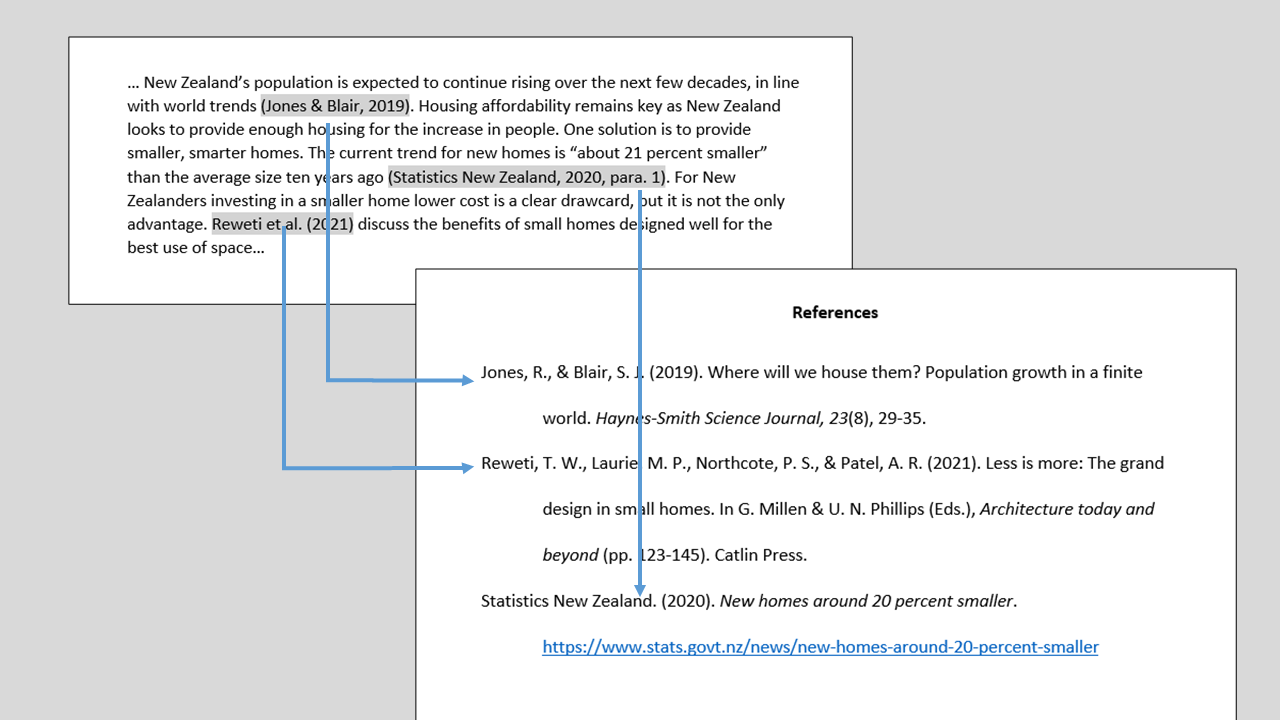
Format of in-text citations
In-text citations usually include author and year the work was published.
Direct quotes must also include a page number (or paragraph number if there are no pages, like on a webpage) and the quote must be in double quotation marks.
Examples of in-text citations
Below, the in-text citations are shown in red (but would normally be black).
Paraphrase (from a book)
To extinguish a large fire by helicopter is a highly demanding undertaking, but very rewarding if you succeed (Reid, 2014).
or
Reid (2014) says to extinguish a large fire by helicopter is a highly demanding undertaking, but very rewarding if you succeed.
In the second example above, you'll notice the author has already been mentioned as part of the sentence. In that case, only the date needs to be included in brackets.
(Note, the above is demonstrating how to cite a single author. See APA guides, for examples of citing two or more).
Short direct quote (from a webpage)
“You need to be able to think clearly under pressure, to apply common sense amidst the action, be emotionally resilient, and exhibit courage when the going gets tough” (Fire and Emergency New Zealand, 2023, para. 5).
In the above example, the author is an organisation, rather than an individual.
Notice the double quotation marks around the words in the quote above. These are important when you are using the original author’s exact words.
See How do I quote or paraphrase? for more information, including how to format long quotes.
References list
The references list sits at the end of your assessment.
It’s a list of all the sources you’ve mentioned in your writing.
List each source once, even if you have referred to that source more than once within your text.
The sources are listed alphabetically, by author. The list is also double spaced and uses hanging indent. See this guide for how to apply spacing, hanging indent and A-Z ordering:
Here is an example references list (can you spot the full references for our two in-text citations above?):
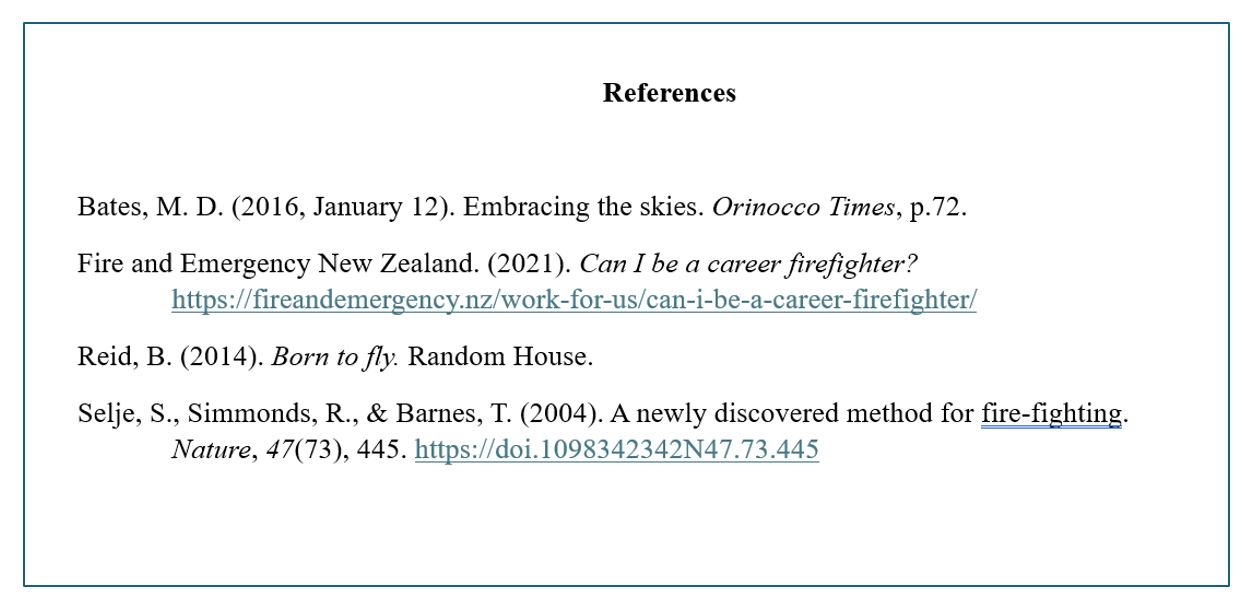
Reference list entries have four key parts:
AUTHOR, DATE, TITLE, SOURCE
(source might be a publisher, journal details, website name, link)
Examples:
Book

Webpage
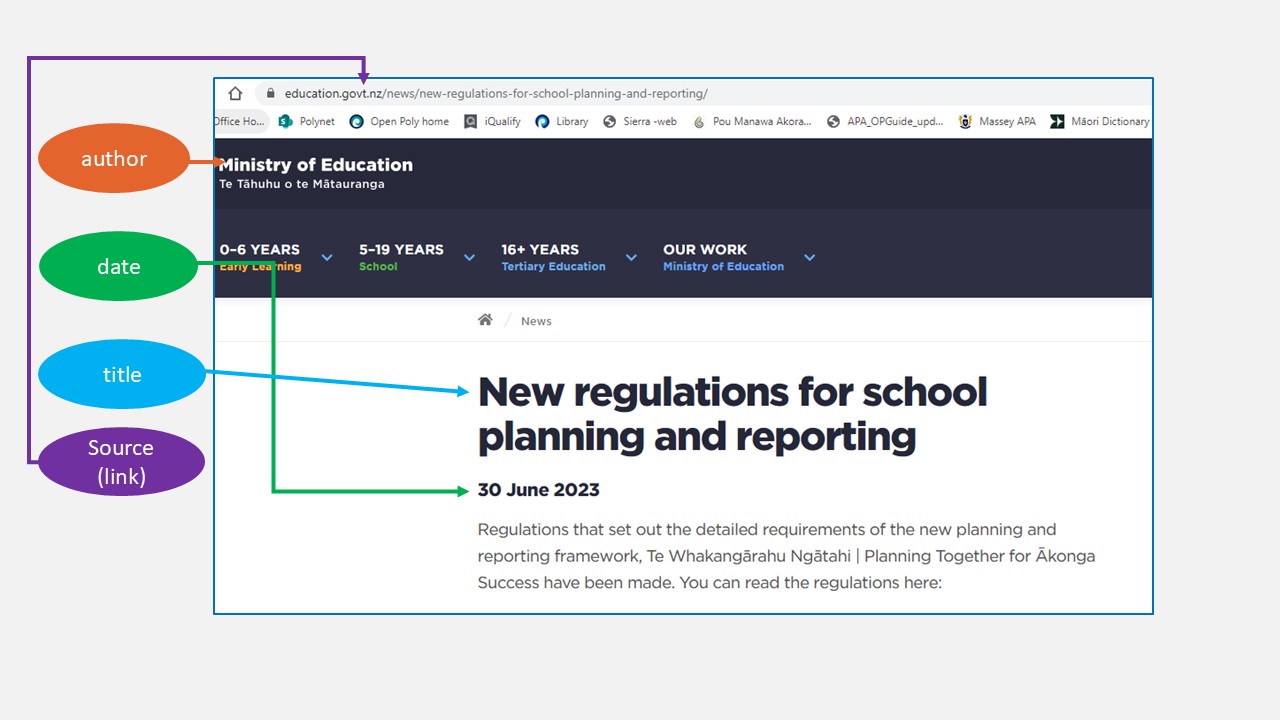

Referencing guides
The above information is a starting point for how to reference.
It is essential you use a referencing guide to learn how to format the reference for each particular type of source you use, e.g. journal article, news item, report, etc.
See Referencing guides.
Further resources
Quick drag n drop exercises - (Worthington et al., 2022)
These are a fun way to test yourself on the correct format for different source types.
Video: Introduction to how to reference in APA 7th ed. style [3.47 mins]






